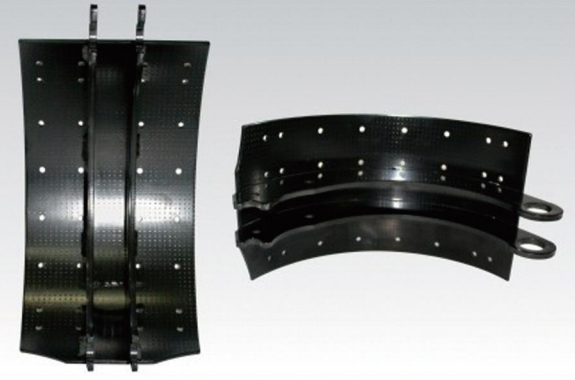
Considerations on Safeguarding Truck Part Integrity
The reliability of a heavy-duty truck part depends not only on how it is built but also on how it is handled after production. The journey from the factory floor to the fleet garage can determine whether the part performs as intended. Even minor shipping vibration, temperature fluctuation, or improper storage can affect the performance of components such as truck brake calipers, slack adjusters, and air brake chambers.
For heavy duty truck parts manufacturers, quality assurance continues long after manufacturing. Testing, packaging, storage, and transportation all play critical roles in preserving the physical integrity and performance of each part before it reaches the customer.
Packaging as the First Line of Defense
Proper packaging design is the first barrier between a product and potential damage. It protects against physical shock, corrosion, and environmental changes that could compromise precision-built truck parts.

- Shock absorption: Packaging for truck brake shoes and chambers often includes layered padding and vibration-absorbing materials. These protect delicate finishes, coatings, and fittings during long-distance transport. The packaging must withstand multiple handling stages, from forklifts to shipping containers, ensuring the component remains undamaged.
- Moisture protection: Since corrosion is one of the leading causes of product degradation, moisture barriers such as VCI (Vapour Corrosion Inhibitor) films and desiccants are included in sealed packages. This prevents rusting of metal surfaces and maintains the integrity of brake linings and valves.
- Dimensional security: Parts like truck brake calipers or slack adjusters are held in custom-fit inserts to prevent internal movement during transit. These inserts are designed to match the exact shape of the component, minimizing friction and impact within the box.
- Temperature control: For components sensitive to heat or humidity, insulated packaging prevents expansion, warping, or condensation. This ensures consistent material behaviour when the part is finally installed.
- Labelling and traceability: Each box is tagged with part numbers, batch codes, and QR tracking labels. Clear labelling reduces handling errors, speeds up inventory checks, and provides immediate traceability for logistics teams and customers alike.
Packaging is the first assurance that quality built into each part remains intact through storage and delivery.
Transport and Handling Control
Transportation exposes components to the greatest variability. The road, sea, and warehouse environments all bring mechanical stress, pressure, and temperature changes. Transport control ensures that these challenges do not compromise the integrity of parts.
- Load distribution: Pallet design and container layout are planned to evenly distribute weight. Uneven loading can deform brake drums or axles placed under excessive pressure. Balanced stacking maintains the geometry of every component.
- Vibration control: Long-distance shipping involves continuous vibration from vehicle movement or sea motion. Shock-absorbing layers and foam bracing reduce mechanical stress, keeping brake chambers, slack adjusters, and valves aligned.
- Environmental monitoring: Many suppliers now use temperature and vibration sensors inside containers. Data is transmitted in real time to verify that environmental conditions remain within safe limits, allowing adjustments during transit if needed.
- Stacking limits: Heavy components must not be overstacked. Setting defined stacking heights and weights prevents bending or surface deformation, especially in brake assemblies with tight clearances.
- Route planning: Logistics teams select carriers and routes that minimise transfer points and handling changes. Fewer transfers mean fewer chances for mishandling or contamination, ensuring the part arrives as built.
Transport management combines engineering foresight and logistics precision to maintain consistent part quality during global distribution.
Storage and Environmental Protection
The warehouse is where many truck components spend the longest time before installation. Proper storage ensures that materials remain stable and functional even after months of inactivity.
- Controlled climate storage: Maintaining constant humidity and temperature prevents corrosion, condensation, or material fatigue. Air brake chambers, brake linings, and valves remain stable under controlled conditions, avoiding performance degradation.
- Proper shelving and spacing: Components are placed on steel racks or pallets designed to avoid contact and deformation. Adequate spacing also improves airflow and access during inspection or retrieval.
- Rotation and inventory checks: Using FIFO (First In, First Out) systems prevents older stock from remaining in storage too long. Over time, certain seals or coatings can deteriorate if left unused, so inventory rotation is vital.
- Anti-dust and contamination measures: Dust and airborne debris can damage sealing surfaces or enter air systems. Enclosed or filtered storage environments ensure clean, contamination-free parts for assembly.
- Inspection before dispatch: Before shipping to distributors, parts are rechecked for surface quality, dimensional tolerance, and corrosion signs. This final visual inspection confirms that the product remains as precise as it was post-manufacturing.
Proper warehousing preserves not just the physical appearance of parts but their functional precision.
Testing Beyond the Factory
Even after packaging and shipping systems are designed, they are themselves tested and improved. Manufacturers replicate real logistics conditions to identify weaknesses in protection and ensure long-term durability.
- Vibration testing: Simulated road and sea vibration tests reproduce the forces parts experience in global transit. This ensures sensitive items like brake calipers or valves remain dimensionally stable.
- Drop and impact testing: Packages are dropped from varying heights and angles to confirm that internal supports and shock absorbers effectively prevent component damage.
- Environmental simulation: Test chambers replicate humidity, temperature, and atmospheric pressure changes to observe how packaging and part coatings respond to extreme conditions.
- Compression testing: Pallet loads are stacked under increasing pressure until deformation occurs. This identifies safe stacking limits for long-term storage or transport.
- Traceability verification: The traceability system is tested through mock logistics runs, confirming that every product can be tracked and authenticated without data loss.
These extended tests transform logistics into a measurable science, making it possible to guarantee quality control outside the factory floor.
Data and Traceability
Digital tracking systems have become an essential part of modern truck part logistics. They provide transparency, accountability, and the ability to monitor product condition throughout the supply chain.
- Barcode and RFID tracking: Every truck brake part, from brake chambers to axles, carries an identification tag linked to its production record. Scans at each handling point create a complete digital trail from manufacturing to installation.
- Batch documentation: Manufacturers maintain detailed data logs that include material composition, inspection results, and production dates. This ensures accountability and allows precise recall management if a defect is discovered.
- Logistics transparency: Advanced tracking platforms allow customers to monitor shipment location, temperature, and vibration data in real time, giving full visibility from factory to destination.
- Warranty validation: Digital tracking simplifies warranty claims by confirming product authenticity and usage history, ensuring that only verified, traceable products are serviced.
- Predictive analytics: Using the data collected from logistics sensors, manufacturers can identify trends such as recurring vibration levels or temperature issues, enabling proactive improvements in packaging or route planning.
Traceability converts logistics data into a tool for continuous improvement and reliability assurance.
All Truck Parts: Quality Delivered, Not Just Manufactured
At All Truck Parts, quality extends through every stage of the supply chain. The company combines engineering precision with logistical expertise to ensure that all components from brake shoes and calipers to chambers and axles, to arrive in their best condition.
- Secure packaging systems: Reinforced packaging with tailored inserts and corrosion barriers keeps products safe during long-distance transport.
- Certified logistics partners: Collaborations with approved carriers maintain temperature control, vibration monitoring, and secure documentation throughout the shipping process.
- Inspection checkpoints: Each shipment undergoes inspection at multiple points, confirming that dimensions, coatings, and surfaces remain intact.
- Comprehensive documentation: All products are accompanied by quality certificates, batch records, and traceability data for full transparency.
- Global consistency: With tightly managed processes and supply networks, All Truck Parts ensures uniform standards across domestic and international deliveries.
Every stage, from production to delivery, reflects the company’s commitment to performance, reliability, and professional quality assurance.
Conclusion
Safeguarding the integrity of truck parts involves more than engineering precision. It is an integrated process combining packaging, transportation, testing, and digital traceability. Through continuous monitoring and quality control, manufacturers like All Truck Parts ensure that every product retains the same reliability it had when it left the assembly line. The result is consistent, tested quality—delivered as intended, every time.




